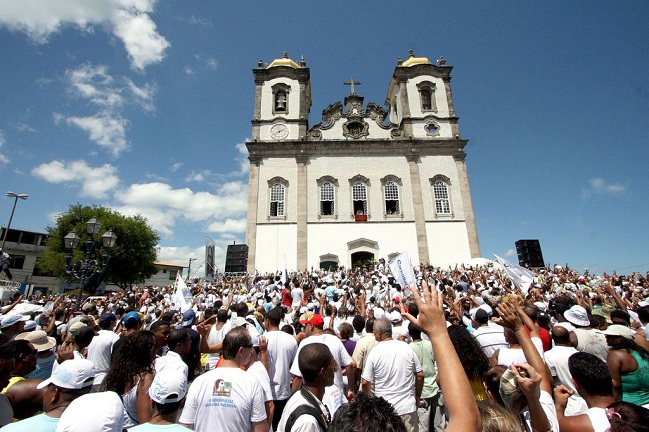Este post também está disponível em:
Português
English
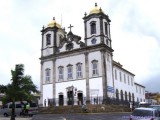
Religiosity is a strong characteristic of Salvadorans.
This can be exemplified by the 160 churches scattered throughout Salvador da Bahia, true monuments from the 17th and 18th centuries that illustrate the power of Catholicism at the time.
In addition to the religious temples, the Afro culture of candomblé is also present throughout Salvador – from the stalls of acarajé with its baianas dressed in white in honor of Oxalá to the more than 500 terreiros scattered throughout the city.
Among the most impressive religious buildings in Bahia, the Church of São Francisco stands out. The interior is almost entirely covered in gold – more than 100 kilos of the precious metal were used in the decoration.
When the light enters the church doors, the bright reflection is a spectacle in itself. This is usually around 5pm, when the doors are opened for the faithful to attend mass.
The Igreja do Senhor do Bonfim is also among the most famous, especially for the traditional washing of the stairs.
The ceremony, always held on the second Thursday after the Day of Kings, brings together baianas in typical costumes and hundreds of clay pots with water of smell. But apart from the rite of washing, the interior of the church impresses with its ceiling paintings, done in 1820 by the Spaniard Francisco Velasco.
This can be exemplified by the 160 churches scattered throughout the city, true monuments from the 17th and 18th centuries that illustrate the power of Catholicism at the time.
In addition to the religious temples, the Afro culture of candomblé is also present throughout Salvador – from the acarajé stalls with their baianas dressed in white in honor of Oxalá to the more than 500 terreiros scattered throughout the city.
Among the most impressive religious buildings in Bahia, the Igreja de São Francisco stands out. The interior is almost entirely covered in gold – more than 100 kilos of the precious metal were used in the decoration.
When the light enters the church doors, the bright reflection is a spectacle in itself. This usually happens around 5pm, when the doors are opened for the faithful to attend mass.
The Church of Senhor do Bonfim is also among the most famous, mainly for the traditional washing of the staircases.
The ceremony, always held on the second Thursday after the Day of Kings, brings together Bahians in typical costumes and hundreds of clay pots with water of smell. But besides the rite of washing, the interior of the church impresses with the paintings on the ceiling, made in 1820 by the Spanish Francisco Velasco.
Videos about the Churches in Salvador – History and Architecture
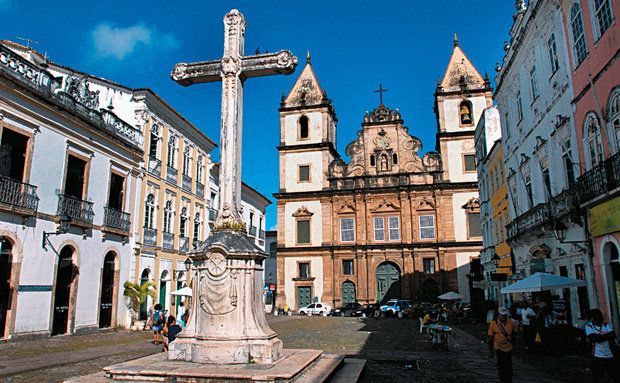
See also Evolution and History of Plastic Arts in the Northeast e the Historical Center of Salvador
Churches in Salvador – History and Architecture
- Catedral Basílica
- Convento de Santa Teresa
- Igreja dos Aflitos
- Igreja do Bonfim
- Basílica de Nossa Senhora da Conceição da Praia ou Igreja de Nossa Senhora da Conceição da Praia
- Igreja Nossa Senhora de Mont Serrat
- Igreja Nossa Senhora do Rosário dos Pretos
- Igreja e Convento de São Francisco
- Igreja da Ordem Terceira de São Francisco
- Igreja Nossa Senhora do Pilar e Santa Luzia
- Catedral Basílica Primacial do Salvador
- Igreja Nossa Senhora dos Mares
- Paróquia Nossa Senhora dos Alagados
- Igreja e Convento de Santa Clara do Desterro
- Santuário Santa Dulce dos Pobres
- Igreja de Nossa Senhora da Vitória
- Igreja Santo Antônio Além do Carmo (Bairro Santo Antônio Além do Carmo)
1. Catedral Basílica
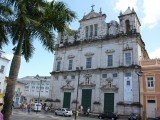
Location: Praça 15 de Novembro, s/n, Terreiro de Jesus
Built in the 17th century, it welcomes visitors with representations of Saint Ignatius of Loyola, Saint Francis Xavier and Saint Francis of Borja.
The mother of all Bahian churches has bells imported from Portugal and, inside, ornate altarpieces from different periods.
It is open to the public from Monday to Saturday, from 8.30am to 11.30am and from 1.30pm to 5pm; Sundays, only for masses, at 9am and 6pm.
2. Convento de Santa Teresa
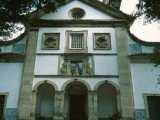
Location: Rua do Sodré, 276, Center
One of the attractions of this monastery is the Museum of Sacred Art, one of the main in the Northeast, with a permanent exhibition of religious objects from the colonial period.
This mid-17th-century complex is considered one of the most important monuments of religious architecture from the Brazilian colonial period.
It has beautiful gardens, with a panoramic view of the Bay of All Saints, which make this place one of the most pleasant in historic Salvador.
The building houses the Museum of Sacred Art, maintained by the Federal University of Bahia, with about 1,400 pieces in the collection – including wooden and terracotta images, sculptures, paintings, tile panels, silverware and furniture – dating from the 16th to the 19th century.
See also History of the Convent and Church of Santa Teresa or Museum of Sacred Art UFBa in Salvador BA
3. Igreja dos Aflitos
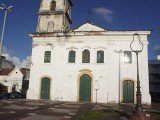
Location: Rua dos Aflitos
The Church of the Aflitos was built with the money of alms and donations of the Portuguese Antônio Soares, who founded the temple, in the XVIII century, on a slope of the geological fault, where, in the XX century, the Av. do Contorno appeared.
From there you can see the sea and the houses of Gamboa. The place is so beautiful that it is one of the few viewpoints of the Bay of All Saints that still exist in Salvador.
The neighborhood of the temple also deserves attention, especially the houses with typical architecture of the 19th century. Visits from Monday to Friday, from 8am to 12pm and from 2:30pm to 6pm.
4. Igreja do Bonfim
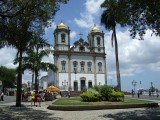
Foundation: 1745
Location: Praça Senhor do Bonfim, in the Bonfim neighborhood, known as the Sacred Hill.
The most famous religious temple in Bahia is not considered the largest or the most beautiful.
However, it carries, in its 237 years, the weight of Bahian history and culture. Internally, one of the most visited spaces is the Sala dos Milagres and the Ex-votos Museum.
It is the most popular church in Bahia. The traditional washing of the steps of the Church of Bonfim attracts thousands of pilgrims, faithful and tourists on the second Thursday of January, after the Day of Kings.
The façade is partially covered with tiles. The interior of the temple was built in neoclassical style.
The gates surrounding the space are lined with thousands of Senhor do Bonfim ribbons, symbols of the Bahian faith, placed by faithful from all over the world who visit the temple and make requests to the saint.
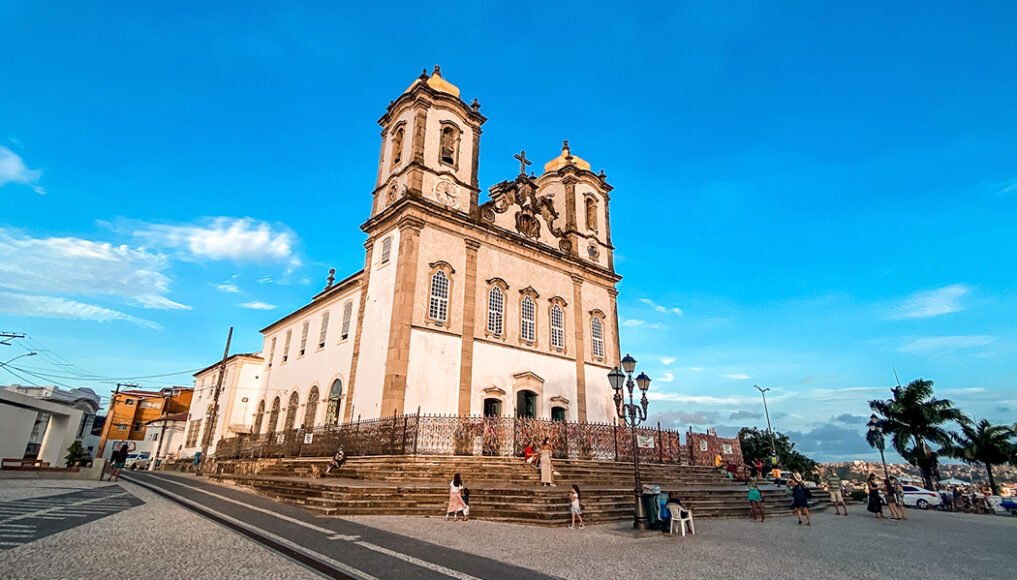
One of the trademarks of Salvador is the ribbon of Senhor do Bonfim, these are delivered in the church of the saint of the same name, located in Largo do Bonfim, which is considered a historical landmark of the Bahian capital.
In addition to picking up the traditional ribbons and making their requests, tourists can get to know the architecture of the church that has its construction dated in 1745.
For those who visit the religious temple, you can still get to know the popular Lavagem do Bonfim, which takes place on the second Thursday of the year, and is considered the second largest popular event in Bahia, behind Carnival.
5. Igreja Nossa Senhora da Conceição da Praia

Location: Rua da Conceição da Praia, Comércio neighborhood, near two great postcards of Salvador: Elevador Lacerda and Mercado Modelo.
Foundation: 1549
Spacious, naturally lit and facing the sea, the Church of Nossa Senhora da Conceição da Praia or Basilica of Nossa Senhora da Conceição da Praia was prefabricated in Alentejo, Portugal. The lioz stones were numbered in the terrinha and brought to the colony, where they were assembled in 1765.
The greatest treasure is on the ceiling of the nave, which features an illusionist painting made in 1772 by master José Joaquim da Rocha, founder of the Bahia School of Painting and one of the greatest names of the Brazilian Baroque.
The church holds the ruins of Salvador’s first house of prayer and was founded by the first governor general of Brazil, Thomé de Souza.
The temple, which has a Baroque style, has the only 3D ceiling painting in Latin America.
The work of art was produced in a nave format and has a dimension of 633.60m² and 18.20 cm in height. The technique used was oil painting.
The neoclassical facade differs from other colonial churches in Bahia, with towers arranged diagonally. It is open on Mondays, from 7am to 12pm and from 2pm to 5pm; Tuesday to Friday, between 7am and 5pm; Saturdays and Sundays, from 7am to 12pm.
See the History of the Basilica of Nossa Senhora da Conceição da Praia
6. Igreja Nossa Senhora de Mont Serrat
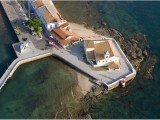
Location: Rua Santa Rita Durão, Ponta do Humaitá.
Foundation: 1580
The foundation of the primitive sanctuary of Nossa Senhora do Monte Serrat does not have an exact history, but some believe that its construction took place by the governor of Brazil Francisco de Souza, at the same time that he built the fort of São Felipe, with its foundation in 1580.
The architectural complex dates from the second half of the 17th century, with a project by the Italian architect Baccio de Filicaya.
The little church was built by the governor-general of Brazil, Francisco de Souza, at the same time as he built the fort of São Felipe. Francisco de Souza donated the church to the Monastery of São Bento.
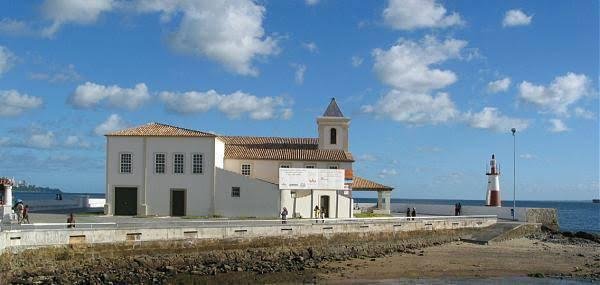
The Church and Monastery of Monte Serrat were listed by the National Historical and Artistic Heritage Institute (IPHAN) for their cultural importance.
In the early 20th century, it was renovated and the main altar received ornaments from the Church of São Bento. It houses an image of Saint Peter Repentant, by Friar Agostinho da Piedade.

Built between the 16th and 17th centuries near the Porte de Mont Serrat, the church stands on a rock that juts out into the sea, giving the impression of being integrated into the scenery.
7. Igreja Nossa Senhora do Rosário dos Pretos
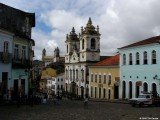
Foundation: 1685
Location: Praça José de Alencar, in Largo do Pelourinho, Historic Center of Salvador.
A building that is part of the architectural heritage of Pelourinho, the church, with a rococo façade, was built especially to welcome the faithful who immigrated from the African coast.
Erected between 1704 and 1796, the Church of Our Lady of the Rosary of the Blacks began to be built in 1704. Completed in 1796, it was erected by slaves and dyed the heart of the Historic Center blue.
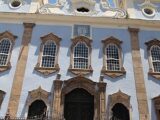
A legacy from the days before abolition, the back of the church has a slave cemetery.
The façade, with its rococo pediment, features well-crafted work and beautiful towers. Inside, there are tile panels, neoclassical altars and three 18th-century images: Our Lady of the Rosary, Saint Anthony of Cartagerona and Saint Benedict.
The ceiling panel is by José Joaquim da Rocha.
Its religious identity sets it apart. It was built by enslaved blacks of Christian faith, who did not have a space to celebrate their beliefs.
During masses, the faithful sing and dance to the sound of atabaques, agagogôs and pandeiros, instruments related to African culture.
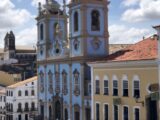
According to the prior of the brotherhood, Leomar Borges, this is the only church dedicated to black saints that holds the title of Third Order, given by the curia on July 2, 1899. The church has a rococo style and neoclassical altars.
The masses have an atypical characteristic of religious syncretism, where Candomblé and Catholicism are side by side.
On Tuesdays, at 6pm, and Sundays, at 10am, masses are said to the sound of atabaques from African rituals.
8. Igreja e Convento de São Francisco
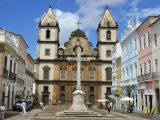
The first disciples of Saint Francis of Assisi arrived in Salvador in 1587, the year in which the first convent was probably founded.
A few decades later, when the Dutch invasion of 1624 took place, both the church and the friars’ quarters were left in ruins, and it was necessary to undertake the reconstruction of the complex.
And with the growth of the order, in 1686 the Franciscan superior, Friar Vicente das Chagas, promoted the works that were not only of expansion, but practically of construction of a new convent and a new church, which should have much larger dimensions than the previous ones.
Thus, on the feast of St. Anthony that year, the foundation stone of the new church was laid.
The work took many years and several generations of friars.
In 1713, under the direction of the superior Friar Hilário da Visitação, the church already had altars (still without gold) and was consecrated. However, the general structure of the building was not completed until ten years later, when the façade, entirely clad in stone, was finished.
Throughout the 18th century many additions were made to the beautification of the Church and Convent of St. Francis: new altars were made (and the existing ones were covered with gold), decoration of the ceiling, covering of walls with tiles from Lisbon, placement of balustrades, etc.
This church is considered one of the most beautiful in Brazil, and one of the best examples of Portuguese Baroque in the world.
9. Igreja da Ordem Terceira de São Francisco
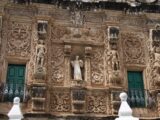
Foundation:1703
Location: Rua da Ordem Terceira, Pelourinho, Historic Center.
Expressive example of the Baroque in Brazil, the Igreja da Ordem Terceira de São Francisco, located in Salvador, Bahia, had its foundation stone installed on January 1, 1702.
The Igreja da Ordem Terceira de São Francisco, located in Salvador, Bahia, had its foundation stone installed on January 1, 1702.
Its exuberant high-relief façade, carved in carved limestone with sandstone cornerstones, bears in its central niche the image of St. Francis, carved in marble.
The Igreja da Ordem Terceira de São Francisco is located in Salvador, Bahia.
The original baroque interior was replaced by neoclassical altars between 1827 and 1828.
The Portuguese tiles, however, were mostly kept and are distributed throughout the cloister, consistory, aisles and galleries of the church.
They show scenes of Lisbon before the earthquake that destroyed the city in 1755 and the procession of the marriage of Prince Joseph to Maria Ana de Bourbon.
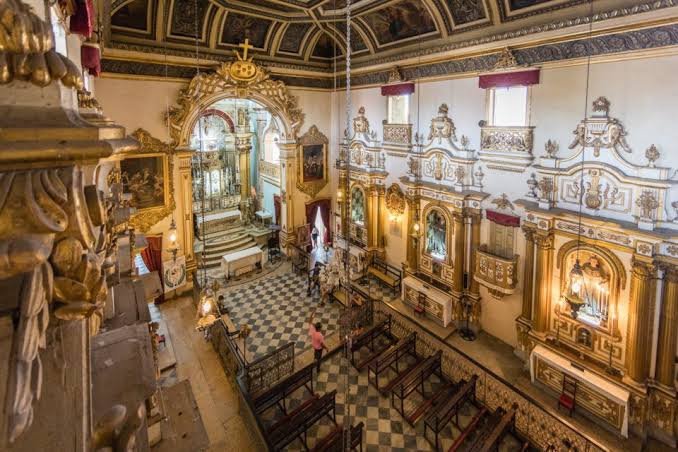
The church also houses important works of sacred art, such as the sculpture of the dead Lord crying tears of rubies, by Francisco das Chagas Xavier, as well as a room of the saints in which life-size images of them are exhibited.
The Church of the Third Order of St. Francis was built between the 17th and 18th centuries and is an architecture that refers to the Spanish Baroque.
In the church, there are paintings on the ceiling and a set of Portuguese tiles from the colonial period. Among the curiosities about the church, it is said that more than a ton of gold was used for internal decoration.
10. Igreja Nossa Senhora do Pilar e Santa Luzia
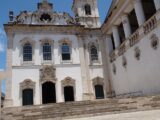
Foundation: 1710
Location: Praça do Pilar, 55, in the Comércio neighborhood.
Built in rococo style, with rock decorations and soft paintings, the church’s greatest attraction is the fountain of Santa Luzia, known as the patron saint of the eyes.
Thousands of faithful visit the temple and bathe their eyes in a fountain located in the church, under the faith that they will have their visual problems solved.
11. Catedral Basílica Primacial do Salvador
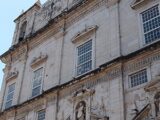
Foundation: 1672
Location: Terreiros de Jesus, Pelourinho, in the Historic Center of Salvador.
Considered the “mother church” of all Catholic temples in Salvador, the Basilica Cathedral houses the main liturgical acts of the state, presided over by the primate archbishop.
Built in a genuine Baroque style, the church has a large collection of sacred art.
It is the largest temple built by the Jesuits in Brazil.
12. Igreja Nossa Senhora dos Mares
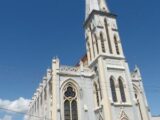
Foundation: The current mother church was built between 1930 and 1956.
Location: Praça Padre Manoel da Natividade, in Largo dos Mares.
However, Igreja Nossa Senhora dos Mares was the first temple dedicated to the saint was founded in the same region almost 200 years earlier, in 1749. The space was demolished for the construction of the new temple.
It is the only church in Bahia built in the neo-Gothic style, characterized by verticality, pyramid-shaped roof, pointed towers and predominance of windows and rose windows.
13. Paróquia Nossa Senhora dos Alagados
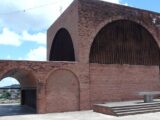
Foundation: July 7, 1980, during the first visit of Pope John Paul II to Brazil.
Location: Luiz Régis Pacheco Street, in the Alagados neighborhood of Uruguai.
Unlike secular churches, the church was built in a contemporary architectural style, clad in exposed brickwork that draws rectangular and circular shapes.
The church is located in a peripheral neighborhood of the capital of Bahia.
14. Igreja e Convento de Santa Clara do Desterro
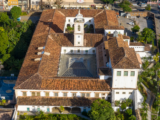
Foundation: 1677
Location: R. Santa Clara, S/N – Nazaré, Salvador
The Convent of Santa Clara do Desterro was founded in 1677, when four sisters of the Order of the Poor Clares, from Évora, Portugal, came to Brazil, in order to implement religious teaching.
When they arrived in Bahia, they stayed for 10 days on board the ship, waiting for some works to be finalized in the Convent, which until that time was nothing more than a small church, called Desterro.
.
Started in 1681, in a place where there was a small church and the Hospice of Desterro, then with 05 or 06 cells, it is the first convent of nuns in the country.
The convent of the Poor Clares is built around two cloisters, with the church on one side.
The architectural composition is enhanced by the bulbous tower from the first half of the 18th century, located in the body dividing the cloisters, and by the belvedere – a common feature in convents of nuns – which was used there for the first time in Bahia.
The church, volumetrically inserted in the rectangle of the composition, has a single nave, chancel, “low choir” and “high choir” and side access, with neoclassical decoration, the result of 19th-century reforms.
On the second floor of the convent is the chapel of the Most Holy Crucifix of the Steps, with a 19th-century altar and altarpieces.
The convent has a large number of implements, silver objects and furniture from the 18th and 19th centuries.
In 1907, by superior decree. The order ceased to form religious, because the novitiate was forbidden. The few surviving Poor Clares passed on their teachings and duties to their followers, the Franciscan Sisters.
The order ceased to form women religious in 1906 because novitiate was forbidden.
To continue the work of the Poor Clares, there are currently 20 sisters in the Convent of Desterro, in charge of maintaining an orphanage for 50 children.
The Franciscan Sisters of the Convent of Desterro, in charge of maintaining an orphanage for 50 children.
The older sisters, says Sister Maria do Rosário, help with the sewing, the preparation of sweets and liqueurs and the kitchen work, sold so that the maintenance of the boarding school can be guaranteed.
In addition, the Convent currently has an external school and with the monthly fees it receives, it provides financial support for the welfare works.
In its three centuries of operation, the Convent of Desterro has undergone some repairs, but still retains much of the old structure.
See also the History of the Church and Convent of Santa Clara do Desterro
15. Santuário Santa Dulce dos Pobres
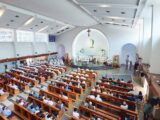
Foundation: 2003
Location: Av. Dendezeiros do Bonfim, in Largo de Roma, Salvador.
Sister Dulce, known as Saint Dulce of the Poor, was canonized in October 2019 by Pope Francis, becoming the first Brazilian-born saint.
The shrine is where the tomb that holds the remains of the “Good Angel of Bahia”, as she is called by many faithful.
At the Santa Dulce dos Pobres Shrine, visitors can also attend mass and learn a little about the life and work of Sister Dulce at the memorial that holds the story of her life and work;
Always with open doors to welcome and give spiritual support to those who need it most, the Santa Dulce dos Pobres Shrine has been in operation since 2003 and was built thanks to the help of the faithful and donations.
The shrine is located in Salvador, next to the headquarters of the Social Works Sister Dulce (OSID), in Largo de Roma, and has a seating capacity of over 1,000 people.
The church began to be erected in 2002, from the Brick Campaign, on the same site where in the 40s of the 20th century Sister Dulce had built the Workers’ Circle of Bahia and the Cine Roma.
Chapel of the Relics
It is in the Sanctuary that the relics (term used to designate the body or part of the body of the blessed or saints) of the Good Angel of Brazil are deposited, in a space called Chapel of Relics – a circular room, with triple ceiling height, having in the center the tomb that keeps the remains of the Mother of the Poor.
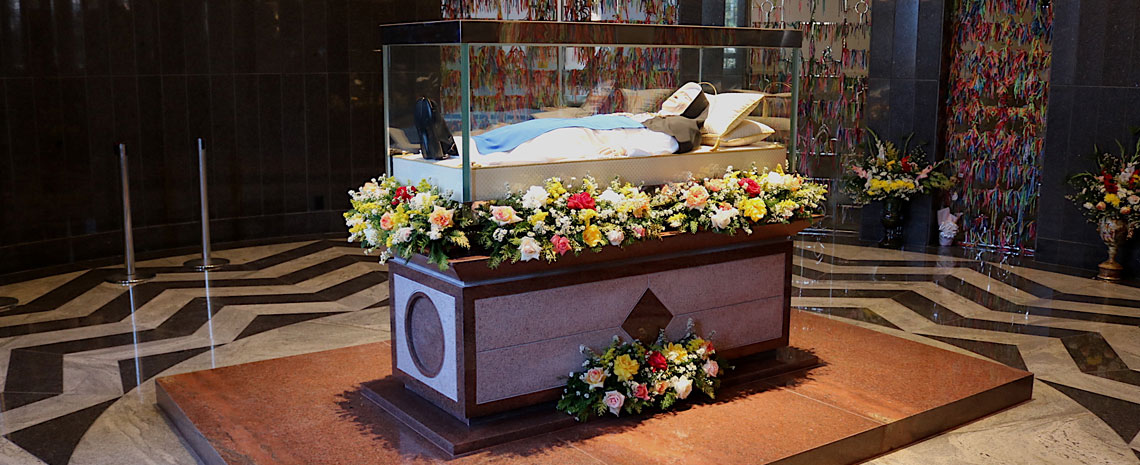
A place of devotion and faith, the Chapel of Relics was opened on June 9, 2010, when the body of the then Venerable Dulce was transferred from the Santo Antônio Chapel (located in the Sister Dulce Memorial) to its new home. The transfer was made after the exhumation of the religious’s body, followed by a vigil.
In September 2019, the site underwent a new renovation, gaining a glass tomb with a life-size effigy of Saint Dulce of the Poor.
16. Igreja de Nossa Senhora da Vitória
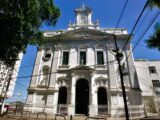
Foundation: 1561
Location: Rodrigues Lima Square, in Largo da Vitória, Salvador
The Church of Nossa Senhora da Vitória was listed by the National Historical and Artistic Heritage Institute (Iphan) for its historical importance, the temple is the second oldest in Brazil. Built in the 16th century, the church houses a large number of baroque images from the 18th century Bahian school.
The temple has undergone several renovations over time, the place has a great architectural beauty, with neoclassical elements in its facade. Visitors to the church can still get to know its beautiful view of the Bay of All Saints.
The sanctuary was built by the Portuguese in the 16th century and houses a large number of baroque images from the 18th century Bahian school.
The building has been remodeled several times, and in 1910 had the facade modified with the addition of elements of neoclassical style.
Because of the changes, the site is now undergoing a restoration that aims to return the church to the characteristics of the original architecture, from the 20th century. All the buildings added to the church in recent years are being demolished.
17. Igreja Santo Antônio Além do Carmo
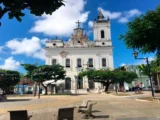
Foundation: 1594
Location: Largo de Santo Antônio, Salvador
The Santo Antônio Além do Carmo Church was founded in 1594 in honor of Saint Anthony.
Santo Antônio Church was founded in 1594 in honor of Saint Anthony. From a small chapel, it underwent extensions and renovations, having been the scene of Dutch invasions and also of Portuguese resistance.
Throughout history the temple has undergone renovations from a small chapel to the church it is today.
Its façade has a rococo style and its interior is covered with neoclassical carvings. On site, you can watch the sunset and follow parties that take place in the churchyard.
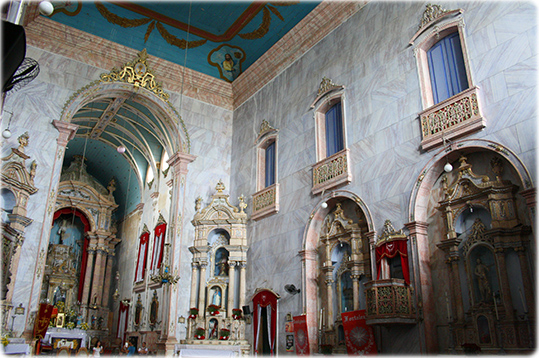
Its main temple, the Church of Santo Antônio Além do Carmo, was rebuilt in 1813 where there was once a primitive temple.
Santo Antônio Além do Carmo neighborhood is more than a church
Santo Antônio Além do Carmo is a peculiar neighborhood that is part of the historic center of Salvador and reserves a bit of leisure, history, gastronomy and architecture.
The visit to a religious temple, which dates from the first years of colonization of Brazil and is located on the edge of the Historic Center of Salvador.
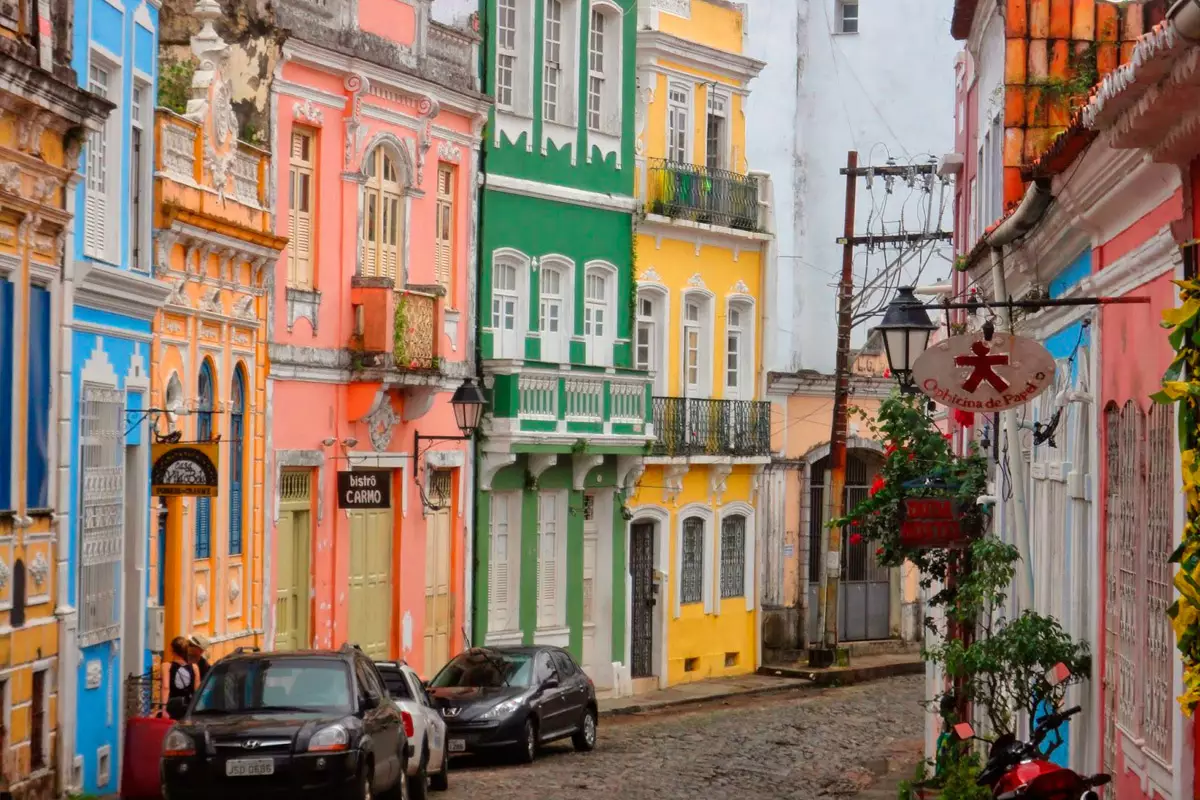
It is a set of pleasant activities, which begins with the visit itself, added with historical-cultural knowledge among the houses and cobbled streets of the Santo Antônio neighborhood, and can be closed with one of the most beautiful sunset views of the Bay of All Saints and a beer, coffee, acarajé or pastries, in one of the numerous bars and cafes in the area.
All this makes the Church of Santo Antônio Além do Carmo a delightful walking tour of the most pleasant for those who are in the Historic Center of Salvador, whether tourist or soteropolitan.
In the same itinerary are gathered centuries of Brazilian history, architecture in various styles, the typical culture of two Bahians and the wide and beautiful view of the Bay of All Saints.
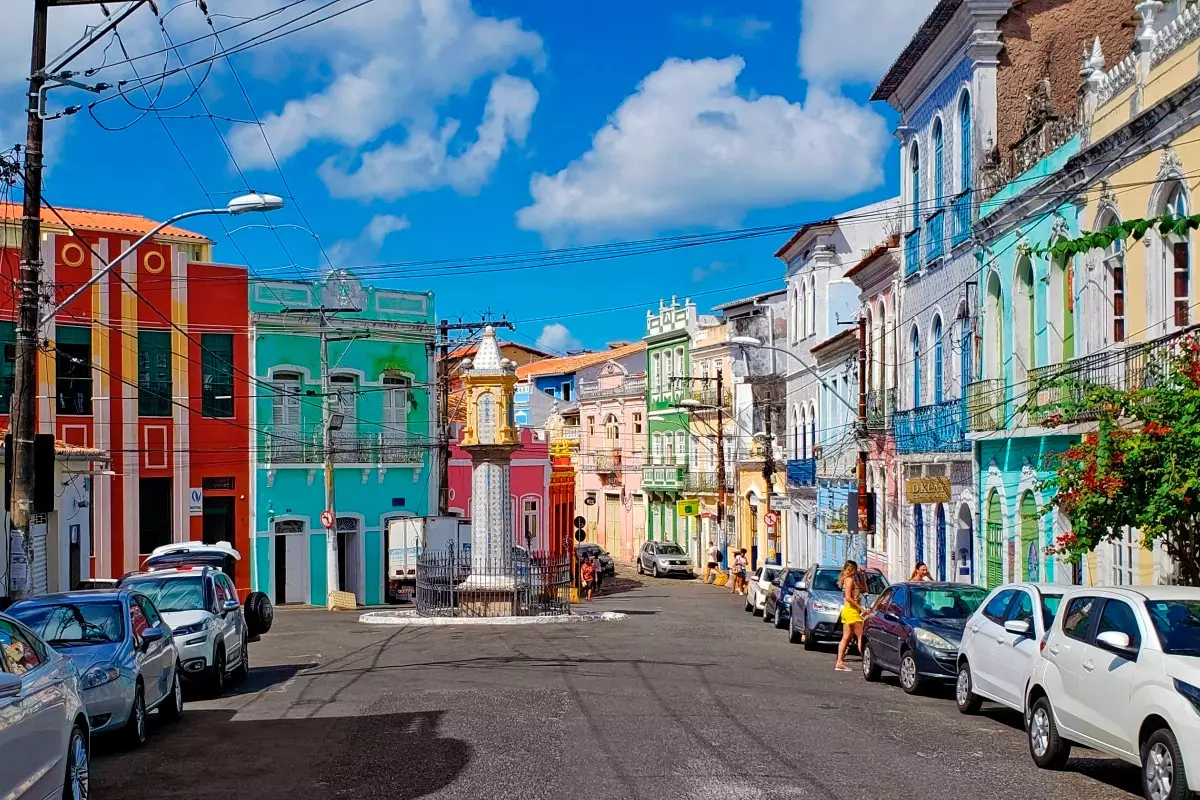
The story goes that the Church of Santo Antônio was founded in 1594 in honor of Saint Anthony. From a small chapel, it underwent extensions and renovations, having been the scene of Dutch invasions and also of Portuguese resistance.
It is said that Father Antônio Vieira, to prevent Dutch troops from conquering Salvador, used the pulpit of the church to preach his sermon ‘On the edge of the trenches’, which, for 40 days, defended the city against Nassau’s troops.
Beyond the gates – In the colonial period the urban limits of Salvador ended where today is the lower part of Largo do Pelourinho, between the access to Baixa dos Sapateiros, Ladeira do Taboão (which leads to Cidade Baixa) and the ascent to Convento do Carmo.
The term “Além do Carmo” is an allusion to its geographical position, since the church was situated beyond one of the entrance gates to the city of Salvador – the Portas do Convento do Carmo.
Until the beginning of the 20th century, the Santo Antônio neighborhood was the residence of aristocrats, which is portrayed in the neatness of the facades of two houses and the asymmetry of its streets. However.
In addition to the group of churches and the Carmo Convent, there is the Boqueirão church and, at the end, next to the old Barbalho Fort (now the Capoeira Fort), the Santo Antônio Church.
It is probable that the primitive chapel was enlarged as early as the beginning of the 17th century, as it is said that, during the Dutch invasion of 1624, a ‘church’ on the site was occupied by the invaders, and worship was only re-established there after the battle that took place the following year, which liberated the city.
It was elevated to a mother church in 1648 and continued to undergo renovations until the 20th century! Its interior is covered with escaiola, neoclassical carving and its façade typically rococo.
Another interesting thing is that in the courtyard of this church there are rehearsals of the carnival block ‘De Hoje a Oito’, ‘Bailinho’ parties and Skanibais concerts, among others.
Next door, in the square of the same name, the traditional Festa de Santo Antônio takes place, which begins with the trezena, from June 1 to 13, with typical June food and drink stalls, officially opening the period of the June festivities.
